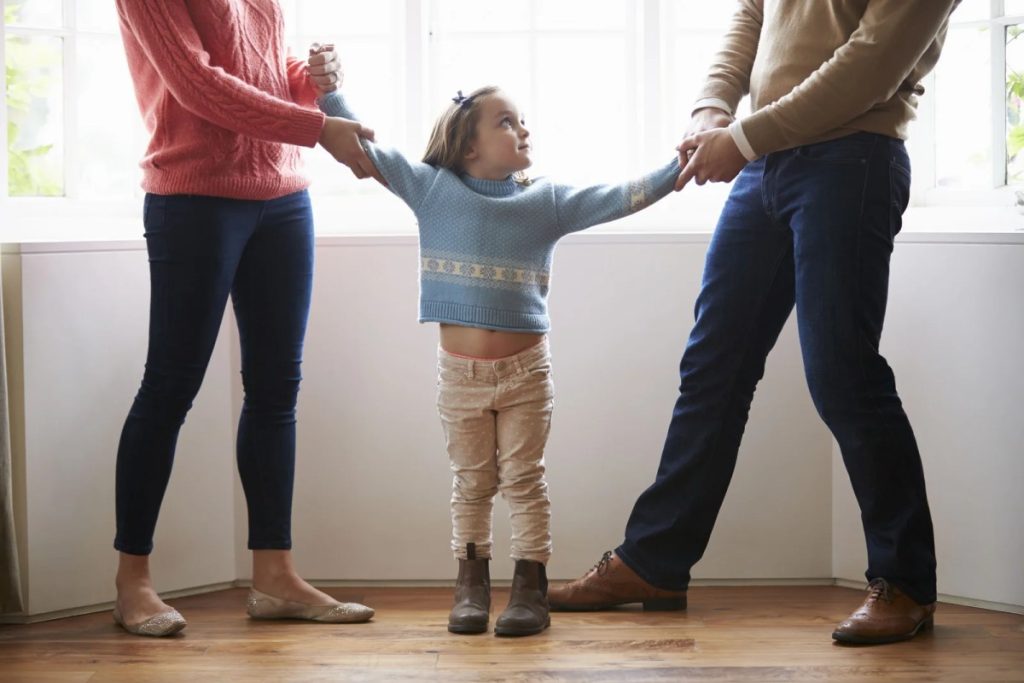
Divorce is seldom a one-time affair—it’s a process that takes place over months or even years, and for children, its effects are less determined by the formal split itself and more by the home atmosphere prior to the split and after the split. Perhaps the single most influential factor affecting how children come to terms with divorce is the intensity and quality of conflict between parents, both before and following the breakdown of the marriage.

Studies demonstrate that divorce adjustment in children is very inconsistent, and many of these differences can be explained by the quality of the family environment, particularly interparental conflict. From the Divorce Process and Child Adaptation Trajectory Typology (DPCATT) Model, it is not the divorce itself but how much conflict there was before the separation and afterward that mainly causes children’s adaptation trajectories. It follows that two children who have gone through parental divorce can have wildly disparate experiences based on the frequency of conflict or harmony between their parents.

Before divorce, children in high-conflict families tend to develop symptoms of distress in the form of depression, anxiety, and behavioral and academic difficulties. These symptoms can occur years before actual separation as continuous parental conflict undermines a child’s security and happiness. For kids whose parents did not fight much and had a fairly tranquil home, the divorce will be a surprise, often experienced as an unwelcome and uncontrollable loss. In such situations, children may see a sudden drop in adjustment shortly after the split.

The first response to divorce is heavily affected by what has previously existed. In children raised in highly conflictual families, the dissolution of the marriage could potentially be relieving, with some research indicating positive changes in behavior and emotional health once the chronic stress of parental conflict is eliminated. Children from lower-conflict homes could fare more negatively, grappling to find meaning in an unanticipated loss.

What occurs following divorce is equally significant. When parents can manage to decrease conflict and develop a cooperative co-parenting relationship, children are likely to overcome the stress of the breakup and acclimate to their changed family configuration. But when conflict is high—about such concerns as custody, child support, or visitation—children can have persistent emotional and behavioral difficulties that can carry forward into adulthood. Intergenerational conflict can convert what could have been a short-term adjustment process into a chronic strain, magnifying the likelihood of depression, anxiety, and even physical ill health.

How parental conflict impacts children is intricate and far-reaching. Children’s feelings and perceptions are key. Under repeated exposure to arguments, children can feel threatened, blame themselves for the dispute, or become anxious about abandonment. These affective reactions can act as intermediaries for conflict influence on mental health, resulting in internalizing issues such as depression or externalizing issues in the form of aggression and defiance. The quality of parenting can also be important—conflict can extend to carry over into the parent-child relationship, elevating parental stress and decreasing emotional availability, which in turn contributes to children’s adjustment problems.

Having the feeling of being trapped between parents is a prevalent experience for children, particularly if there is conflict. Feeling in the middle can result in loyalty conflicts, guilt, and greater psychological distress. Parents’ communication regarding the other parent, as well as involvement of the child in the fight, may either minimize or maximize such feelings.

Not all children are impacted the same. Age comes into play, too—young children are more likely to blame and fear abandonment, whereas teenagers are likely to become angry or shut down emotionally. Gender is also a possibility, with some research indicating boys are more susceptible to externalizing problems and girls to internalizing problems, though the cause of these has yet to be fully investigated. Coping abilities of children, feelings of mastery, and resilience can act as buffers against conflict’s adverse effects, as can positive relationships with caring adults, such as grandparents, teachers, and peers.

The type of custody arrangements and co-parenting also cross-react with levels of conflict. Joint custody is helpful where parents are cooperative, but in high-conflict cases, constant shifts between homes will exacerbate stress and loyalty conflicts. Supportive co-parenting, which involves constructive communication and respect for each other, maintains children’s relationships with both parents and leads to improved outcomes. Yet in the absence of cooperation, even good-faith custody arrangements can fail.

Social and cultural influences further contribute to children’s experiences. Children are likely to be supported and experience less distress in societies with strong extended family ties. Social disapproval or supportlessness, on the other hand, can also exacerbate parental conflict and its effects on children.

As such, there is no single approach. The most positive results are obtained when parents can reduce conflict, have supportive relationships with the children, and access professional services when necessary. Therapy, counseling, and formal co-parenting programs can offer useful strategies to families dealing with divorce. As CNS Healthcare indicates, children are helped by open communication, consistent routines, and daily affirmation of parental love.
Ultimately, although divorce is a serious change, it is the character of the relationships and the climate surrounding the child—particularly the amount of conflict between parents—that most strongly influences their way forward. By recognizing these dynamics and being mindful of decreasing conflict, aiding children’s emotional needs, and establishing strong, positive relationships, families can assist children not only to survive but to prosper after divorce.


